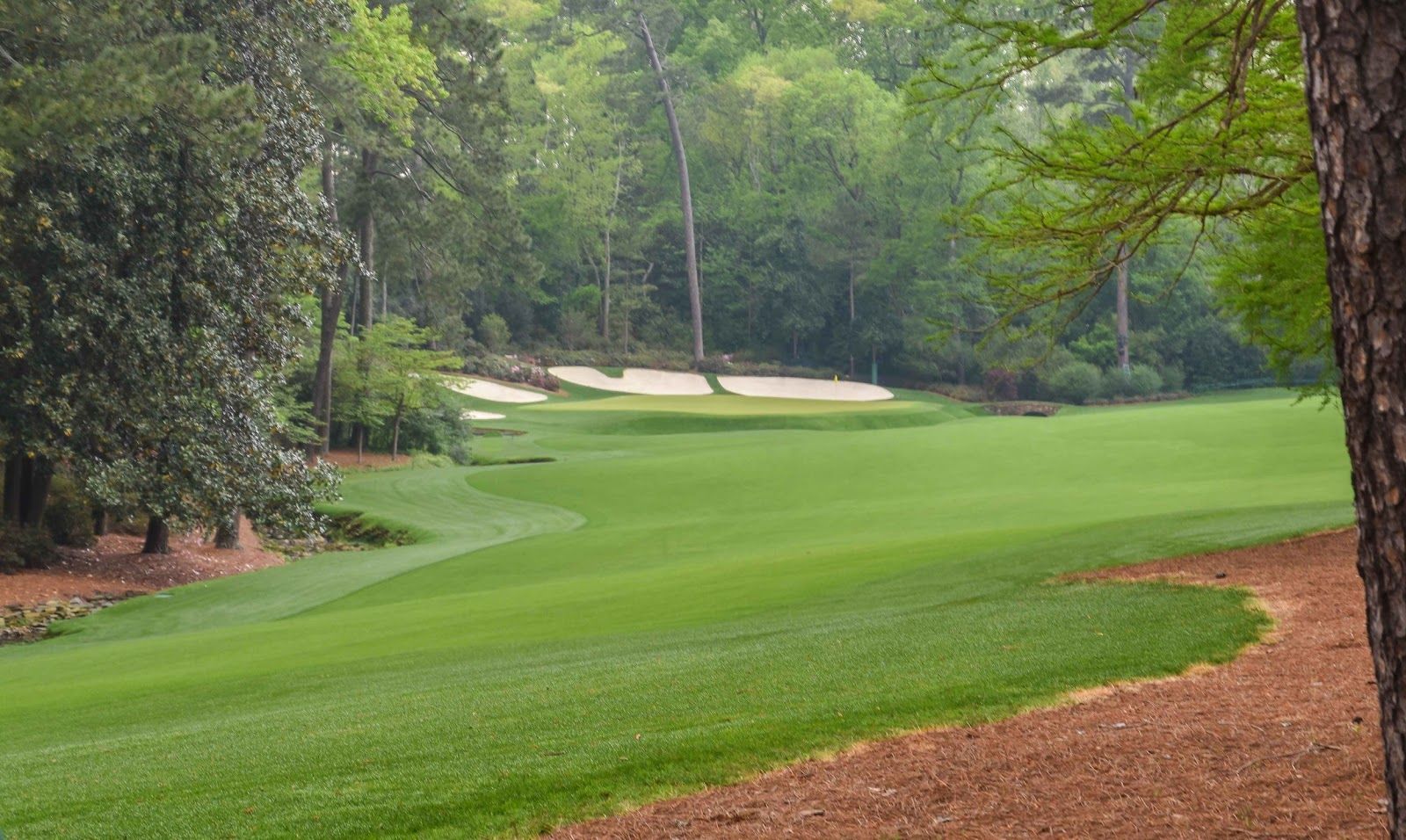The message of great, strategic golf course architecture is clear. The actual words used to describe those golf courses, however, are many. The Architecture Glossary column will examine more precise terms and concepts that one will find when exploring golf course architecture. Hopefully understanding these terms, and why certain architects employed them, will help you to better understand the golf courses you play…and maybe even improve your scores!
This month’s term is ‘Graduated Rough’.
The best way to define graduated rough may be to define what it’s not. Let’s say that you’ve hit a little too much of a fade off the first tee at a parkland golf course. Your ball ends up in the rough. Offhand, your friend may refer to your ball being in the “first cut.” But is it, truly?
That depends on one important factor: Is there a second cut?
Many golf courses do not have a technical “first,” or “step cut.” Both of these terms have emerged due to the popularity of graduated rough, or having several different heights of grass as one moves away from the fairway. The idea behind graduated rough is to increase the penalty on a golfer based on how far they’ve gone off of the fairway (but the idea has evolved, as we’ll see).
Ironically, the current popularity of graduated rough was not intended to make the punishment incremental at all. In fact, the moment that launched graduated rough as a constant in championship golf occurred as a method to make the penalties more equal.

Although much less pronounced than that used during the 2006 U.S. Open, a small strip or collar of rough still exemplifies the concept of graduated rough at Winged Foot's West Course. (Photo Credit: Larry Lambrecht)
Eventual USGA President Mike Davis — then working as senior director of rules and competitions — proposed the concept of graduated rough for the 2006 rendition of the U.S. Open at Winged Foot. The U.S. Open was, and is, the most notorious event in the world for its approach to rough. At the time, course setup involved a single cut, generally around five inches in length. The problem was that the logistics of a major championship often meant that players actually ended up in a better position the farther they flew from safety. Fans and their feet were the problem.
"It had become a pet peeve of mine to watch a guy just miss a fairway and wind up in the thickest part…that hasn't been trampled,” Davis said in an interview leading up to the event. “Whereas a guy who hits it off the planet, outside the ropes or near the ropes might get a better lie."
By cutting the first turf buffer at a shorter height, it was Davis’s hope that all golfers would be playing their second shots from a similar lie, no matter how far off the fairway they went. If anything was to impose further penalty for a bigger miss, it would be a combination of trees and worsened angles of approach.

Even the pinch point at The Country Club's No. 3 hole features two separate cuts of graduated rough besides the fairway. It's important to note, however, that the native grass is not considered a "cut" of rough. (Photo Credit: Larry Lambrecht)
The trend has continued at almost every U.S. Open since, with the width of the first cut differing based on the context of the club that was hosting. For example, 2022 host The Country Club often features little room for rough between its fairways and native fescue. In these cases, most of the rough was left at “second-cut” height (a wrist-rattling 5.5 inches) while a thin “collar” of first cut lined the outer edges of the thin fairways.
As has often been the case, however, memberships and management at non-Tour clubs have sought to emulate the results seen on television. At its most innocent, this means graduated rough in its intended form — causing differing degrees of difficulty based on how far off the fairway the user has landed. For example, those who land some 20 feet right will struggle more to advance their ball toward the green than those who roll just off the fairway, in the six or so feet dedicated to first-cut (also known as “step cut,” “semi-rough,” and “intermediate rough”).
More problematically, some clubs chose to tighten their existing fairways by converting the edges to step-cut, perhaps placing less-than realistic expectations for the accuracy of the common player. This practice has decreased as width-and-angles continues to be the en vogue approach to fairway maintenance.

Augusta National Golf Club does not feature graduated rough; there is only one cut around the majority of the course. This short cut demonstrates, however, how a short layer of graduated rough can equalize play between scratch players and mid-handicappers. (Photo Cred: P.J. Koenig)
Still, there is a place for graduated rough within today’s world of strategic golf. For example, a collar-height rough like the one seen at Augusta National Golf Club can be an effective equalizer between the expert golfer and the mid-handicapper (it should be noted that Augusta’s rough is not graduated, as there is only the one height of cut). Many watching The Masters might scoff at the height of Augusta’s rough, especially when compared to the rough at U.S. Open venues. Even a cut that short has a profound impact on the scratch player’s ability to control spin on their ball, impacting accuracy, if not distance. At the same time, such a short cut makes little impact on a less-skilled golfer, who is likely happy just to find the green, rather than a birdie putt.
Among the least likely locations to see a graduated rough are clubs that put total emphasis on width and angles. For example, golfers at Royal Melbourne and other Australian sandbelt courses will find much less resistance when they roll off the fairway. Longer grass exists at a single height across the course, however it’s unlikely to impact distance so much as spin control.
How does your superintendent feel about graduated rough? If they’re lacking for staff, graduated rough can be either a positive or a negative tool.

Royal Melbourne, among other Melbourne sandbelt courses, emphasizes a single cut of rough versus the graduated trend. (Photo Cred: Gary Lisbon).
On one hand, the expectation for graduated rough can be a struggle, because it requires staff to make two separate mowing sweeps, to create the two different cuts. On the other hand, a superintendent who is short on manpower can also instruct staff to cut just a few lines outside of the fairway, rather than the entire rough. By leaving the outer rough long, they’ve both created a graduated system and saved man hours.
Is there a right or wrong answer when considering whether to incorporate graduated rough into a design? Often, as with the USGA’s incorporation of the technique, context is everything.
Hopefully we don’t need to think about it too much, of course, because we hit our tee shot into the fairway.
